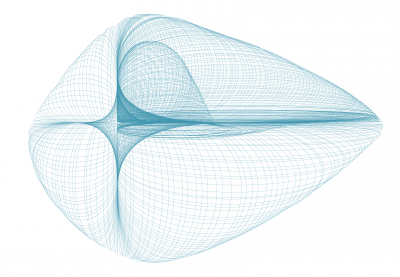Many of CMUP's researchers work on applications of Mathematics to other subjects in science and technology. For some, this is the main aspect of their research; for others, applications appear as interesting uses for their mathematical expertise.
We present an overview of ongoing research in applications of Mathematics in CMUP.
Some involve direct analysis of real world data and case studies, done in close connection with research groups outside CMUP that specialise in the area of application, including international reference research groups.
In other cases, the project consists on either the analysis of existing mathematical models or in the development of new models.
For the sake of presentation, the project is divided here into four streams, according to the area of application. This division leads to some overlap, since the same mathematical tools are sometimes applied to different subject areas by the same people.
More specifically, we have:
A) Signal and data analysis, with Biomedical applications.
This stream deals mainly with statistical and time-variant modelling in the health sciences.
Statistical methods applied include time-series and longitudinal analysis, stochastic processes, finite mixture models, latent classes models and statistical learning.
Multimodal linear and non-linear analysis in time and in frequency domains, and in time/scale (wavelets) are used together with traditional statistical tools.
These techniques are applied to real data in the Life and Health Sciences and in order to do it, members of this team work in close connection with researchers outside CMUP in these areas.
Connection with groups working on electrocardiogram (ECG) has been particularly fruitful in recent years.
B) Models in Economics and Finance.
Along with micro- and macro-economic techniques, this stream uses tools from probability and statistics, dynamical systems, singularity theory, bifurcation with symmetry, forward-backward stochastic differential equations (FBSDEs) driven by Lévy processes, and numerical simulation.
This is mainly done in collaboration with economists.
Problems addressed are:
- New Economic Geography: models for the spatial distribution of industry in several regions, describing the flux of industrial workers.
- General Equilibrium Theory: search for a complete answer to a question from 1940: in a generic economy, are there only a finite number of Walrasian equilibria?
- Conditions for existence of multiple equilibria on macroeconomic growth models.
- Development of new indicators for labour market rigidity computed from real employment adjustment data.
- Option Pricing: study of a market with jumps in the presence of a large investor. We employ FBSDEs with a path dependent final condition to price exotic options.
- Financial Markets: study of persistence characteristics and long-memory in financial prices, using novel fractal dimension estimator algorithms for finite samples of 2D curves against well-established algorithms, such as rescaled-range-analysis or detrended-fluctuation-analysis, to study fractal characteristics in real-world financial signals.
- Estimation of the adjustment coefficient in risk theory.
C) Models in Biology.
This stream deals with the analysis of models, using both theoretical tools and numerical simulations.
Problems addressed are stochastic gene expression and systems of coupled cells, with application to neuroscience, pattern formation, circadian rhythms, epidemiology and locomotion.
Techniques range from stochastic analysis of differential equations to methods of numerical simulation. Symmetry methods are applied in the geometrical analysis of ordinary and partial differential equations modelling specific phenomena.
Some of the work is done in close collaboration with experimentalists.
D) Models in Physics and Engineering
We address questions in:
- Numerical linear algebra in very large scale problems arising in Mechanical Engineering models.
Numerical analysis methods and theoretical error analysis exist for some problems, but in this field of application, methods are improved by the interpretation of the error bounds in connection with model variables in real life instances.
- Fluid dynamics: this is studied using methods of graph theory and of optimal control, and numerical treatment of partial differential equations using multi-scale techniques. Also by exploiting the connection between the stochastic PDEs and forward-backward doubly stochastic differential equations to obtain existence results for the multidimensional stochastic Burgers equation.
- Robotics: development and analysis of trajectory generators for robots, using methods of dynamical systems and symmetry.
- Structural engineering: detection of deteriorating structures using stochastic differential models.
- Traffic engineering: establish formulae for expected waiting time and length, and their variability, for queues an intersection in urban traffic, under different control policies.


